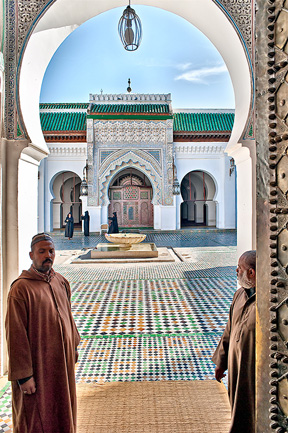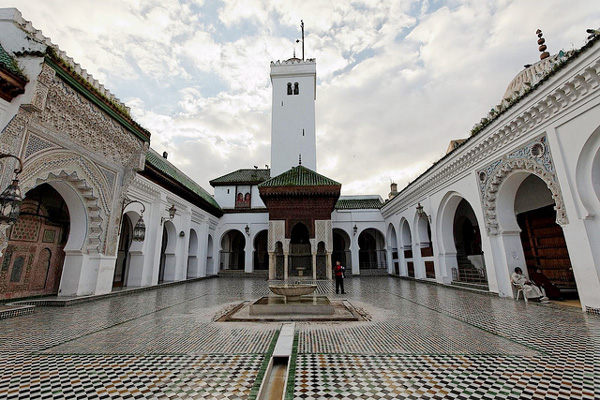[one_half]
Invention of universities were made possible by the Muslim world. Early on in Islamic history, mosques doubled as schools. The same people who led prayers would teach groups of students about Islamic sciences such as Quran, fiqh (jurisprudence), and hadith. As the Muslim world grew however, there needed to be formal institutions, known as madrasas, dedicated to the education of students.
The first formal madrasa was al-Karaouine, founded in 859 by Fatima al-Fihri in Fes, Morocco. Her school attracted some of the leading scholars of North Africa, as well as the land’s brightest students. At al-Karaouine, students were taught by teachers for a number of years in a variety of subjects ranging from secular to religious sciences. At the end of the program, if the teachers deemed their students qualified, they would grant them a certificate known as an ijaza, which recognizes that the student understood the material and is now qualified to teach it.[/one_half]
[one_half_last]
These first degree-granting educational institutes quickly spread throughout the Muslim world. Al-Azhar University was founded in Cairo in 970, and in the 1000s, the Seljuks established dozens of madrasas throughout the Middle East. The concept of institutes that grant certificates of completion (degrees) spread into Europe through Muslim Spain, where European students would travel to study. The Universities of Bologna in Italy and Oxford in England were founded in the 11th and 12th centuries and continued the Muslim tradition of granting degrees to students who deserved them, and using it as a judge of a person’s qualifications in a particular subject.

University of Al-Karaouine – The oldest university in the world
[/one_half_last]





No Comments